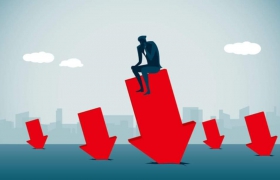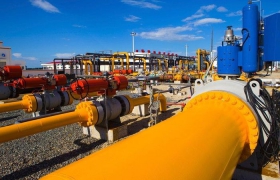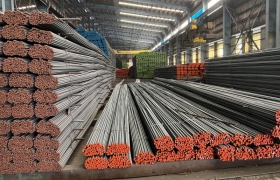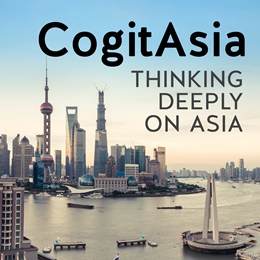- Luật
- Hỏi đáp
- Văn bản pháp luật
- Luật Giao Thông Đường Bộ
- Luật Hôn Nhân gia đình
- Luật Hành Chính,khiếu nại tố cáo
- Luật xây dựng
- Luật đất đai,bất động sản
- Luật lao động
- Luật kinh doanh đầu tư
- Luật thương mại
- Luật thuế
- Luật thi hành án
- Luật tố tụng dân sự
- Luật dân sự
- Luật thừa kế
- Luật hình sự
- Văn bản toà án Nghị quyết,án lệ
- Luật chứng khoán
- Video
- NGHIÊN CỨU PHÁP LUẬT
- ĐẦU TƯ CHỨNG KHOÁN
- BIẾN ĐỔI KHÍ HẬU
- Bình luận khoa học hình sự
- Dịch vụ pháp lý
- Tin tức và sự kiện
- Thư giãn

TIN TỨC
fanpage
Thống kê truy cập
- Online: 223
- Hôm nay: 198
- Tháng: 1621
- Tổng truy cập: 5245625
Will China crash?
Investors monitor a display showing the Shanghai Composite Index at a brokerage in Beijing last month. (Ng Han Guan/Associated Press)

By Robert J. Samuelson September 6 at 8:00 PM
The questions that now face China are whether it can maintain its internal stability and contribute to the vitality of the wider global economy. Like many economic juggernauts before it — Japan springs to mind — China seemed unstoppable. Its economy hummed along at the almost unimaginable annual growth rate of about 10 percent. No obstacle seemed beyond its power to surmount. After the 2008-2009 financial crisis, it adopted a huge stimulus package equal to about 13 percent of its gross domestic product. Growth resumed, and China’s leaders were widely praised.
It now turns out that the Chinese — like the Japanese — are not infallible. Indeed, after allowing for differences in historical circumstances, China and Japan seem to have committed similar mistakes. Japan had relied on exports and business investment until an appreciating exchange rate in the mid-1980s undermined the price competitiveness of its exports. It then adopted an easy monetary policy, which led to bubbles in real estate and stock prices. Similarly, China depended on export-led growth and, when the financial crisis dampened trade, switched to a massive expansion of credit to finance infrastructure projects and more investment in heavy industry.
Robert J. Samuelson writes a weekly column on economics. View Archive
The trouble for both the Japanese and the Chinese was that these credit-driven booms were temporary. Japan’s bubbles burst (the stock market index is still below its 1989 peak). China’s bubbles left surplus production capacity in heavy industries and some sprawling residential developments that are largely empty. China’s leaders seem to have accepted the need for a new economic model — one that relies on consumer spending as the main engine of growth. But changing in theory and changing in practice are not the same.
China’s economy is clearly weakening, and its growth is probably below thegovernment’s target of 7 percent — perhaps way below. In August, China’smanufacturing index fell to its lowest point in three years. Also worrisome areweakening electricity production and railroad freight shipments. But in a report, economists Donna Kwok and Tao Wang of UBS discount these developments. About 70 percent of electricity consumption comes from industry, which is being de-emphasized. As for rail traffic, much of it involves coal movements for power plants; with weak electricity use, that’s diminished.
China’s economy isn’t near collapse, write Kwok and Wang, although they acknowledge serious problems. The biggest is housing overinvestment, which has reduced construction and the demand for building materials (steel, cement). The stock market’s plunge has also left a bitter aftertaste. But good news gets overlooked, they say. In July, sales of retail goods were up 10.3 percent from a year earlier; smartphone sales rose 32 percent. The job market remains strong, and stocks represented, at their peak, only 12 percent of household wealth.
Economist Nicholas Lardy of the Peterson Institute for International Economics, a China expert, agrees. “Wages and disposable income are still going up,” he says. “Consumption is rising.” But it’s being led by services, which represent nearly half of GDP, and not industrial goods, which account for slightly more than a third. “There’s been a lot of spending on health care, education, tourism and entertainment,” Lardy says. He cites one chain of movie theaters whose revenues were up 40 percent in the first half of 2015.
Regardless, China’s slowdown has already had global consequences. The country’s voracious appetite for raw materials (oil, grains, minerals) fueled a commodities bubble that has now burst. Prices soared and have now fallen sharply; there’s surplus mining capacity in many metals. Commodity producers from Australia to Brazil to Saudi Arabia have been hit hard. They (and almost everyone else) overestimated China’s long-term growth prospects. Their miscalculation represents a huge drag on the global economy.
More tricky is the connection between economics and politics. Will most Chinese adjust to the slower growth, still rapid by Western standards? Or will weaker growth discredit the Communist Party? Will China become more nationalistic and mercantilist abroad to distract from domestic disappointments? Lardy thinks the regime’s leaders feel safe as long as job creation remains strong — as it has been. In the first half of 2015, he reports, the number of nonfarm jobs grew by an impressive 7.2 million. The service sector is twice as labor intensive in its hiring as the industrial sector, he notes.
Still, there remains the troubling Japanese analogy. After the collapse of the export-led economic model, Japan never really found an adequate replacement. Its economy has stumbled along from one “reform” to another. In many years, growth averaged less than 1 percent. This was a radical break with the past. If China experiences something similar — even with growth exceeding 1 percent — it’s hard to imagine its leaders reacting with Japan’s passivity.
Các bài viết khác
- The Truth About US Freedom of Navigation Patrols in the South China Sea (08.10.2015)
- Tàu sân bay Mỹ sắp hết thời ? (08.10.2015)
- Nhật sẽ cấp thêm tàu cho Việt Nam (08.10.2015)
- Ngày này tháng 1/ 1974: Kissinger và vụ Hoàng Sa! (08.10.2015)
- China's Meltdown Goes Deeper Than the Stock Market (08.10.2015)
- China's FakeIslands in the South China Sea: What Should America Do? (08.10.2015)
- BÀI VIẾT PHÂN TÍCH Chiến tranh với Trung Quốc (08.10.2015)
- ASEAN must choose between China, US and a third way (08.10.2015)
- 10 lý do khiến Trung Quốc gặp khó khăn trong chiến tranh hiện đại (08.10.2015)
- Thủ Thiêm gần hết đất để phát triển khu dân cư (08.10.2015)
- Sức sống của cát (08.10.2015)
- Trung Quốc: “Bệnh đô thị” ngày càng lây lan (08.10.2015)
- Dự Đoán Địa ốc 2007-2015 (08.10.2015)
- Doanh nghiệp bất động sản Tp Hồ Chí Minh (08.10.2015)
- Chuyên đề tiền vào bất động sản 2015 (08.10.2015)
- Chuyên đề Bất động sản 2015 bắt đầu cho đợt sóng lớn năm năm bền vững ?!!! (08.10.2015)
- ‘Của để đời’ của những đại gia lạ trong giới BĐS (08.10.2015)
- Già ơi, Chào Mi! (04.09.2015)
- Làm thế nào để giảm nguy cơ tai biến mạch máu não ở phụ nữ (04.09.2015)
- Những cái cũ & xưa nhất của Saigon (27.08.2015)
- Nguyên Nhân Thành Công Của Những Người gốc Do Thái ??? (27.08.2015)
- HÌNH ẢNH SAIGON qua máy ảnh người nước ngoài (27.08.2015)
- Một khúc ca xuân! (Tố Hữu) (27.08.2015)
- 10 câu hỏi dành cho nhà vật lý lỗi lạc nhất hiện nay, Stephen Hawking (27.08.2015)
- Bí ẩn tuyệt tự của 3 đời vua cuối cùng nhà Thanh (27.08.2015)
- TRỜI PHẬT DẠY VỀ THỜI GIAN - NGHIỆP BÁO (27.08.2015)
- ĐẮNG VÀ NGỌT (27.08.2015)
- Thư giãn với những hình ảnh đẹp của thiên nhiên (27.08.2015)
- Bài thơ Vấn thoại của Hồ Chí Minh và vụ án oan của ông Nguyễn Thanh Chấn – trandinhsu P2 (27.08.2015)
- Vui trồng hoa thay vì buồn nhổ cỏ (27.08.2015)
- Khám phá Ðèo Ngang (27.08.2015)
- Bài thơ : “Vội” (27.08.2015)
- A Tribute to the Dog - bài diễn văn bất hủ ngợi ca con chó (27.08.2015)
- Cõi già trên Đất Lạ (27.08.2015)
- Thiền và kinh tế học "Thủy tự mang mang hoa tự hồng (27.08.2015)
- Cha con cạn tình (27.08.2015)
- Cha, con và miếng đất (27.08.2015)
- trước cau sau chuối (27.08.2015)
- Điên Vì Đàn Bà (27.08.2015)
- Anh xin thề (27.08.2015)
- Ai ? (27.08.2015)
- Phút thật lòng (27.08.2015)
- Vợ nghĩ gì về chồng (27.08.2015)
- Thời @ (27.08.2015)
- Ba con quỷ (27.08.2015)
- Đỉnh cao đối đáp (27.08.2015)
- Trung Quốc và thế giới (27.08.2015)
- Trung Quốc trắng trợn lộ kế hoạch đánh chiếm đảo thuộc Trường Sa năm 2014 (27.08.2015)
- Thẩm định về ” Thế Kỷ Trung Quốc ?” (27.08.2015)
- Mỹ đang giữ liên lạc chặt chẽ với Việt Nam về vụ giàn khoan Trung Quốc (27.08.2015)
- Mỹ: Trung Quốc phải làm rõ tuyên bố chủ quyền Biển Đông theo UNCLOS (27.08.2015)
- Liệu có xảy ra chiến tranh tại Biển Đông? (27.08.2015)
- Kiện TQ, cơ hội thắng của Việt Nam đến đâu? (27.08.2015)
- Kiềm chế, đối thoại và tuân thủ luật pháp quốc tế (27.08.2015)
- Giàn khoan Hải Dương 981 vướng núi đá ngầm Việt Nam (27.08.2015)
- Giàn khoan Hải Dương 981 “vào giai đoạn hai” (27.08.2015)
- Giải mã tín hiệu chiến tranh của Trung Quốc - Kỳ 3 (27.08.2015)
- ĐÃ ĐẾN LÚC VIỆT NAM PHẢI QUYẾT ĐỊNH! (27.08.2015)
- Biển Đông: Thế trận mới đang hình thành (27.08.2015)
- Đương đầu với thách thức từ Trung Quốc (27.08.2015)
- Đội Hoàng Sa và bí mật quân lương (27.08.2015)
- Bộ trưởng Quốc phòng Việt Nam, Đại tướng Phùng Quang Thanh, vừa có chuyến thăm chính thức Hoa Kỳ. (27.08.2015)
- Mạ Lê Thị A (27.08.2015)
- 49 điều cha dạy con 2014 (27.08.2015)
- Bà mẹ Việt Nam (27.08.2015)
- Nhật ký ông Nội phần 3 (27.08.2015)
- Hồi ký Ông nội -phần 2 (27.08.2015)
- Hồi ký Ông nội -phần 1 (27.08.2015)
- Bình luận khoa học hình sự tập 10 (27.08.2015)
- Bình luận khoa học hình sự tập 9 (27.08.2015)
- Bình luận khoa học hình sự tập 8 (27.08.2015)
- Bình luận khoa học hình sự tập 6 (27.08.2015)
- Bình luận khoa học hình sự tập 5 (27.08.2015)
- Bình luận khoa học hình sự tập 4 (27.08.2015)
- Bình luận khoa học hình sự tập 3 (27.08.2015)
- Bình luận khoa học hình sự tập 2 (27.08.2015)
- Bình luận khoa học hình sự tập 1 (27.08.2015)
- Bình luận khoa học hình sự tập 1 (26.08.2015)
- Luật dân sự 2005 (26.08.2015)
- Đơn khởi kiện đòi nợ vay (26.08.2015)
- ĐƠN YÊU CẦU GIẢI QUYẾT KHIẾU NẠI (26.08.2015)
- Bàn về xác minh điều kiện thi hành án (26.08.2015)
- Nghị Định 84-2007-CP giấy quyền SD đất (26.08.2015)
- Nghị Định 84-2007-CP giấy quyền SD đất (26.08.2015)
- GIẢI QUYẾT CÁC TRANH CHẤP LIÊN QUAN ĐẾN QUYỀN SỬ DỤNG ĐẤT TẠI TOÀ ÁN NHÂN DÂN (26.08.2015)
- THÔNG TƯ 70 BỘ CÔNG AN QUY ĐỊNH CHI TIẾT THI HÀNH CÁC QUY ĐỊNH CỦA BỘ LUẬT TỐ TỤNG HÌNH SỰ LIÊN QUAN ĐẾN VIỆC BẢO ĐẢM QUYỀN BÀO CHỮA TRONG GIAI ĐOẠN ĐIỀU TRA VỤ ÁN HÌNH SỰ (26.08.2015)
- Nghị định xử phạt hành chính trong lĩnh vực tư pháp có hiệu lực từ ngày 18-9: (26.08.2015)
- Nghị quyết của Hội đồng Thẩm phán Tòa án nhân dân tối cao số 02/2004/QĐ-HĐTP ngày 10-8-2004 hướng dẫn áp dụng pháp luật trong việc giải quyết các vụ án dân sự, hôn nhân và gia đình (26.08.2015)
- Luật Thương mại 2005 (26.08.2015)
- Luật Doanh Nghiệp năm 2005 (26.08.2015)
- Nghị Định 14/2007/NĐ-CP (26.08.2015)
- Luật quy định về hoạt động chào bán chứng khoán ra công chúng, niêm yết, giao dịch, kinh doanh, đầu tư chứng khoán, dịch vụ về chứng khoán và thị trường chứng khoán. (26.08.2015)
- luật dân sự (26.08.2015)
- NGHỊ ĐỊNH 121/2007/NĐ-CP (26.08.2015)
- THÔNG TƯ 59/2007/TT-BTC (26.08.2015)
- THÔNG TƯ 61/2007/TT-BTC (26.08.2015)
- NGHỊ ĐỊNH 35/2006/NĐ-CP (26.08.2015)
- NGHỊ ĐỊNH 59/2006/NĐ-CP (26.08.2015)
- NGHỊ ĐỊNH 158/2006/NĐ-CP (26.08.2015)
- NGHỊ ĐỊNH 52/2006/NĐ-CP (26.08.2015)
- THÔNG TƯ 09/2007/TT-BTM (26.08.2015)
- LUẬT NGƯỜI LAO ĐỘNG VIỆT NAM ĐI LÀM VIỆC Ở NƯỚC NGOÀI THEO HỢP ĐỒNG (26.08.2015)
- LUẬT SỬA ĐỔI, BỔ SUNG MỘT SỐ ĐIỀU CỦA BỘ LUẬT LAO ĐỘNG (26.08.2015)
- NGHỊ ĐỊNH 133/2007/NĐ-CP (26.08.2015)
- THÔNG TƯ 38/2007/TT-BTCTHÔNG TƯ 17/2007/TT-BTC (26.08.2015)
- NGHỊ ĐỊNH 140/2007/NĐ-CPNGHỊ ĐỊNH 139/2007/NĐ-CP (26.08.2015)
- Quy trình cấp giấy phép xây dựng (26.08.2015)
- NGHỊ QUYẾT 48/2007CP-NĐ (26.08.2015)
- BỘ LUẬT DÂN SỰ (26.08.2015)
- Quy định chi tiết thi hành các quy định của Bộ luật dân sự (26.08.2015)
- NGHỊ ĐỊNH 126/2007/NĐ-CP (26.08.2015)
- THÔNG TƯ 17/2007/TT-BTC (26.08.2015)
- THÔNG TƯ 38/2007/TT-BTC (26.08.2015)
- PHÁP LỆNH THỪA KẾ (26.08.2015)
- NGHỊ ĐỊNH 139/2007/NĐ-CP (26.08.2015)
- NGHỊ ĐỊNH 140/2007/NĐ-CP (26.08.2015)
- Quy trình cấp giấy phép xây dựng (26.08.2015)
- NGHỊ QUYẾT 48/2007CP-NĐ (26.08.2015)
- BỘ LUẬT DÂN SỰ (26.08.2015)
- Quy định chi tiết thi hành các quy định của Bộ luật dân sự (26.08.2015)
- Quy định chi tiết thi hành Luật Thuế thu nhập doanh nghiệp (26.08.2015)
- Quy định chi tiết thi hành một số điều của Luật Quản lý thuế (26.08.2015)
- LUẬT KINH DOANH BẤT ĐỘNG SẢN (26.08.2015)
- THONG TU 59 NAM 2004 (26.08.2015)
- NGHI DINH 100 NAM 2006 (26.08.2015)
- Luật Sở Hữu Trí Tuệ (26.08.2015)
- NGHI DINH 70 NÁM997 (26.08.2015)
- NGHI DINH 142 NAM 2005 (26.08.2015)
- QUYẾT ĐỊNH 54 NĂM 2007 (26.08.2015)
- NGHI DINH 123 NAM 2007 (26.08.2015)
- NGHI DINH 90 NAM 2006 (26.08.2015)
- NGHI DINH 84 NAM 2007 (26.08.2015)
- luật đất đai (26.08.2015)
- LUẬT CƯ TRÚ (26.08.2015)
- LUẬT QUẢN LÝ THUẾ (26.08.2015)
- NGHỊ ĐỊNH CỦA CHÍNH PHỦ SỐ 103/2006/NĐ-CP NGÀY 22 THÁNG 9 NĂM 2006 (26.08.2015)
- NGHỊ ĐỊNH CỦA CHÍNH PHỦ SỐ 36/2007/NĐ-CP NGÀY 08 THÁNG 3 NĂM 2007 VỀ XỬ PHẠT VI PHẠM HÀNH CHÍNH TRONG LĨNH VỰC CHỨNG KHOÁN (26.08.2015)
- NGHỊ ĐỊNH 163/2006/NĐ-CP ngày 29 tháng 12 năm 2006 quy dịnh về đăng ký giao dịch bảo đảm. (26.08.2015)
- những câu hỏi thường gặp (26.08.2015)
- Cấp thẻ APEC cho doanh nhân VN (26.08.2015)
- CỘNG HOÀ XÃ HỘI CHỦ NGHĨA VIỆT NAM Độc lập - Tự do - Hạnh phúc ------------------------- GIẤY ĐỀ NGHỊ ĐĂNG KÝ KINH DOANH CÔNG TY HỢP DANH Kính gửi: Phòng đăng ký kinh doanh................................................. (26.08.2015)
- GIẤY ĐỀ NGHỊ ĐĂNG KÝ KINH DOANH CÔNG TY HỢP DANH (26.08.2015)
- DANH SÁCH CÁC THÀNH VIÊN CÔNG TY HỢP DANH (26.08.2015)
- HƯỚNG DẪN XÂY DỰNG ĐIỀU LỆ CÔNG TY HỢP DANH (26.08.2015)
- DANH SÁCH CÁC THÀNH VIÊN CÔNG TY TRÁCH NHIỆM HỮU HẠN CÓ (26.08.2015)
- ĐIỀU LỆ CÔNG TY TNHH CÓ HAI THÀNH VIÊN TRỞ LÊN (26.08.2015)
- HƯỚNG DẪN SOẠN THẢO DANH SÁCH CỔ ĐÔNG SÁNG LẬP CÔNG TY CỔ PHẦN (26.08.2015)
- GIẤY ĐỀ NGHỊ ĐĂNG KÝ KINH DOANH (26.08.2015)
- HƯỚNG DẪN ĐIỀU LỆ CÔNG TY CỔ PHẦN THEO QUY ĐỊNH LUẬT DOANH NGHIỆP 2005 (26.08.2015)
- 10 cổ phiếu giá bèo khởi sắc nhất sàn (26.08.2015)
- Qũy PXP Vietnam: "Chúng ta đang ở giai đoạn đầu của thị trường bò tót" (26.08.2015)
- 5 sai lầm của các nhà đầu tư chứng khoán Việt Nam (26.08.2015)
- 10 BÍ QUYẾT LÀM GIÀU CỦA WARREN BUFFETTY PHÚ GIÀU NHẤT THẾ GIỚI (26.08.2015)
- “Vô tư” hủy lệnh giữa phiên (26.08.2015)
- Công ty chứng khoán chưa chuyên nghiệp! (26.08.2015)
- Nhà đầu tư cần biết (26.08.2015)
- có sốt chứng khoán cuối năm (26.08.2015)
- Phát hành thêm = mua cổ phiếu giá rẻ? (26.08.2015)
- 100 người giàu nhất Việt Nam trên sàn chứng khoán (26.08.2015)
- Dự báo TTCK sẽ tăng mạnh trong 4 năm tới (26.08.2015)
- Sàn chứng khoán TP HCM lại tê liệt (26.08.2015)
- Thấy gì qua những doanh nghiệp thuỷ sản niêm yết? (26.08.2015)
- Ra mắt Công ty Chứng khoán Âu Lạc (26.08.2015)
- Thủ tục lưu ký quá chậm trễ vì sao? (26.08.2015)
- Thị trường chứng khoán: Những dự báo và bài học từ Thái Lan (26.08.2015)
- Sự phát triển thị trường chứng khoán và những ảnh hưởng của nó đến hoạt động ngân hàng trong năm 2006 (26.08.2015)
- Tọa đàm khoa học nghiệp vụ "Kinh nghiệm trong công tác kiểm sát giải quyết án dân sự về tranh chấp đất đai, nhà ở" (25.08.2015)
- Khổ vì trót mua nhà đất là tài sản thi hành án (25.08.2015)
- CHƯƠNG 3 CHỐN LAO TÙ LÀ NƠI TA RÈN TÂM TRÍ 20tr (25.08.2015)
- Án thi hành xong bị lật lại : Rối! (25.08.2015)
- Những người góp phần tạo nên tình thế (25.08.2015)
- tiểu thuyết Điệp Báo A10- bản gốc (25.08.2015)
- ÔNG 10 HƯƠNG: TRÁCH NHIỆM - GÁNH VÁC – NHÂN VĂN (25.08.2015)
- Cụm điệp báo A10 và họa sĩ Ớt (25.08.2015)
- Gặp 1 trong 5 người tố cáo chuồng cọp (25.08.2015)
- Thời hiệu khởi kiện về thừa kế: Mốc để tính là khi nộp đơn kiện (25.08.2015)
- 10 loại giấy tờ để xác định thời điểm bắt đầu sử dụng đất (25.08.2015)
- Hướng dẫn giải quyết tranh chấp đất đai (25.08.2015)
- Lập thủ tục mua bán hoặc thừa kế nhà và xin chuyển quyền sử dụng đất (25.08.2015)
- Việt kiều vẫn có quyền hưởng thừa kế (25.08.2015)
- Tranh chấp nhà ở mà một bên định cư ở nước ngoài (25.08.2015)
- Các dạng tranh chấp đất đai phổ biến hiện nay (25.08.2015)
- Tháo gỡ ách tắc trong giải quyết tranh chấp đất đai (25.08.2015)
- Cơ hội nào cho Trần Nhựt Thành? (25.08.2015)
- Những dấu chân rời sau Núi Mộng (25.08.2015)
- Đằng sau một bản án treo (25.08.2015)
- Úp, ngửa cũng là bàn tay (25.08.2015)
- Chuyện buồn ngoài sân tòa (25.08.2015)
- Mẹ con ra tòa (25.08.2015)
- Áo trắng học trò trước vành móng ngựa (25.08.2015)
- Không có hộ khẩu ở Hà Nội có mua đất được không? (25.08.2015)
- Mang hộ chiếu VN còn hiệu lực thì không cần thị thực khi về nước (25.08.2015)
- Thủ tục cải chính họ tên (25.08.2015)
- Nhập hộ khẩu theo chồng hoặc vợ (25.08.2015)
- Giấy khai sinh của con tôi để trống phần tên cha (25.08.2015)
- Xin phiếu lý lịch tư pháp ở đâu? (25.08.2015)
- Chúng tôi không muốn có mặt tại tòa khi ly hôn (25.08.2015)
- Muốn khởi kiện dân sự làm thế nào? (25.08.2015)
- Tranh chấp nhà ở trước 1/7/1991 có yếu tố nước ngoài (25.08.2015)
- Nhập hộ khẩu theo chồng hoặc vợ (25.08.2015)
- Ai là người giàu trên con đường công nghiệp hóa? (25.08.2015)
- Lính bộ binh vào Dinh Độc Lập (25.08.2015)
- XỨ MỸ PHIỀN TOÁI (25.08.2015)
- Một Nước Nhật Quá Xa Xôi (25.08.2015)
- Viễn tưởng (25.08.2015)
- Lý Quang Diệu đánh giá lãnh đạo Trung Quốc (25.08.2015)
- Gót chân Ashin của Trung Quốc (25.08.2015)
- TỘI ÁC CỦA TƯ BẢN (25.08.2015)
- Thời kỳ thoái đã bắt đầu từ lâu - Dự báo 60 năm phần 2 (25.08.2015)
- Dự báo 60 năm đầu thế kỷ 21 và hướng đến thế kỷ 22 (25.08.2015)
- Bài diễn văn của Mục Sư Martin Luther King, Jr (25.08.2015)
- Tham luận về những vấn đề cần rút kinh nghiệm trong công tác xét xử sơ thẩm và phúc thẩm các (25.08.2015)
- Chuyên đề khó khăn trong thi hành án (25.08.2015)
- Nước Mỹ nợ tới hơn 100 nghìn tỷ USD!a ha ! chỉ cần lấy 1/3 dành cho Quân Đội ,1/3 nắm vàng là xong (25.08.2015)
- Giá phải trả của 12 năm kinh tế phi thị trường (25.08.2015)
- Cải cách luật pháp đáp ứng đòi hỏi WTO (25.08.2015)
- Việt Nam gia nhập WTO, những cơ hội và thách thức đối với lĩnh vực văn hóa (25.08.2015)
- Những bất lợi khi bị coi là nền kinh tế phi thị trường (25.08.2015)
- MƯỜI NGUYÊN TẮC THỌ THÊM NHIỀU TUỔI (24.08.2015)
- Một phút suy tư về chữ TÂM ... (24.08.2015)
- gởi các Bạn trên 60 tuổi và còn khỏe mạnh (24.08.2015)
- TUỔI GIÀ LÀ THỜI SUNG SƯỚNG NHẤT (24.08.2015)
- TÔI ÐÃ ÐỨNG TRÊN NGƯỠNG CỬA CỦA CÁI CHẾT (24.08.2015)
- Đăng Sâm chữa bệnh cao huyết áp (24.08.2015)
- CÂY KẾ SỮA (24.08.2015)
- Con người có thể sống đến 500 tuổi nhờ khoa học gen (24.08.2015)
- Phát Biểu của Ðức Ðạt Lai Lạt Ma Thứ 14 TENZIN GYATSO Về Vấn Ðề Tái Sanh của Ngài (24.08.2015)
- Bài thuốc về các loại đậu (24.08.2015)
- bí thuật hồi xuân Tây Tạng 2 (24.08.2015)
- bí mật hồi xuân Tây Tạng 3 (24.08.2015)
- bí thuật hồi xuân Tây Tạng 1 (24.08.2015)
- Bí quyết An Khang: Ăn, Ngủ, Thở (24.08.2015)



















































 Yahoo:
Yahoo: 